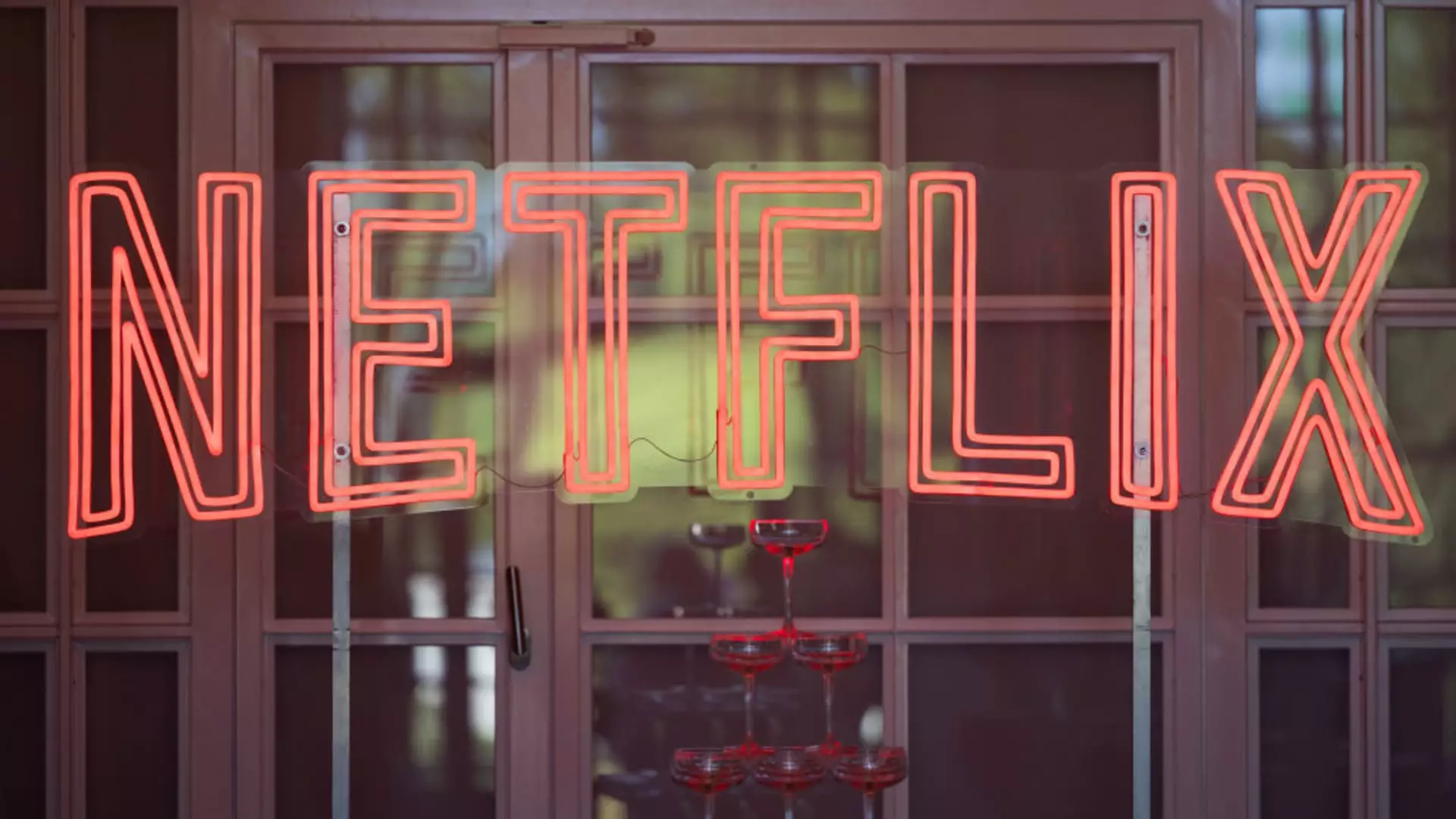In a significant move that has sent ripples through the streaming industry, Netflix revealed on Tuesday its decision to raise prices for most of its U.S. subscription plans. The beloved streaming service announced that its standard ad-free option will jump from $15.49 to $17.99 monthly, a decision that echoes the platform’s efforts to enhance profitability amid a changing market landscape. Meanwhile, the newly introduced ad-supported plan will see its cost rise from $6.99 to $7.99, and the premium tier will climb from $22.99 to $24.99. This price adjustment highlights Netflix’s ongoing strategy to balance the need for revenue growth with subscriber retention in a fiercely competitive environment.
The current wave of price increases is not an isolated phenomenon, as streaming platforms like Disney+ and Warner Bros. Discovery’s Max have also resorted to similar tactics over the past few years. Consumers are becoming increasingly accustomed to facing escalated subscription fees across the board. As traditional revenue models are being scrutinized, many streaming giants pivot towards more hybrid revenue structures that include increased pricing alongside ad-supported offerings. Netflix has been at the forefront of this paradigm shift, evident in its response to dwindling subscriber numbers when it introduced the ad-supported tier in 2022.
According to Netflix co-CEO Ted Sarandos, the key to justifying such a substantial price increase lies in delivering top-tier content that can engage audiences effectively. During the call with investors, Sarandos hinted at exciting and significant upcoming releases slated for 2025, effectively linking content strategy to their pricing philosophy.
For the average consumer, these price surges signify another layer of complexity in their streaming choices. Those who are accustomed to binge-watching popular series and films on Netflix now face the challenge of balancing the value received against an increased financial commitment. While Netflix maintains that the price hike is necessary to sustain content creation and delivery operations, it is also essential to recognize that loyal subscribers may be reaching a tipping point as they assess the overall competitiveness of their streaming options.
The recent changes in Netflix’s pricing also have a direct impact on how subscribers interact with their services. The company recently introduced the ability for standard plan users to add “extra members” to their accounts – a feature that also saw its cost increase from $7.99 to $8.99. This, combined with Netflix’s crackdown on password sharing, epitomizes a significant shift in consumer behavior, as users may reconsider sharing accounts with friends and family or opt to bear the brunt of increased expenses.
Netflix’s price adjustments are not limited to the United States; they extend to other international markets, including Canada, Portugal, and Argentina. The global nature of these changes indicates a strategic approach to revenue maximization across all regions. Co-CEO Greg Peters noted that recent price increments in international territories were met with smooth transitions, reflecting a degree of adaptive consumer behavior and acceptance of market trends.
This broader context encapsulates Netflix’s strategy to tier its offerings so that users can opt for budget-friendly plans that include advertisements while high-value consumers can choose premium viewing experiences – albeit at a steeper price tag. By diversifying its price structure, Netflix empowers consumers with choice, but at the same time, it heightens the stakes for maintaining engagement and satisfaction.
Netflix recently celebrated a remarkable achievement by adding 19 million new subscriptions in the fourth quarter, pushing its total subscriber base to over 300 million. Such milestones indicate that the company’s strategic initiatives, including the launch of ad-supported tiers and the crackdown on password sharing, are yielding favorable results. However, the sustainability of this growth is contingent on Netflix’s ability to continuously deliver compelling content that resonates with its audience and warrants the higher price points.
As Netflix positions itself amidst the fluctuating currents of the streaming industry, the implications of these price hikes resonate deeply with consumers and competitors alike. Navigating this landscape will require a deft balance of creating captivating content, adjusting to user needs, and managing subscriber expectations—all while justifying higher costs. The coming years will undoubtedly be critical for Netflix as it strives to maintain its status as the preeminent player in the streaming arena.

